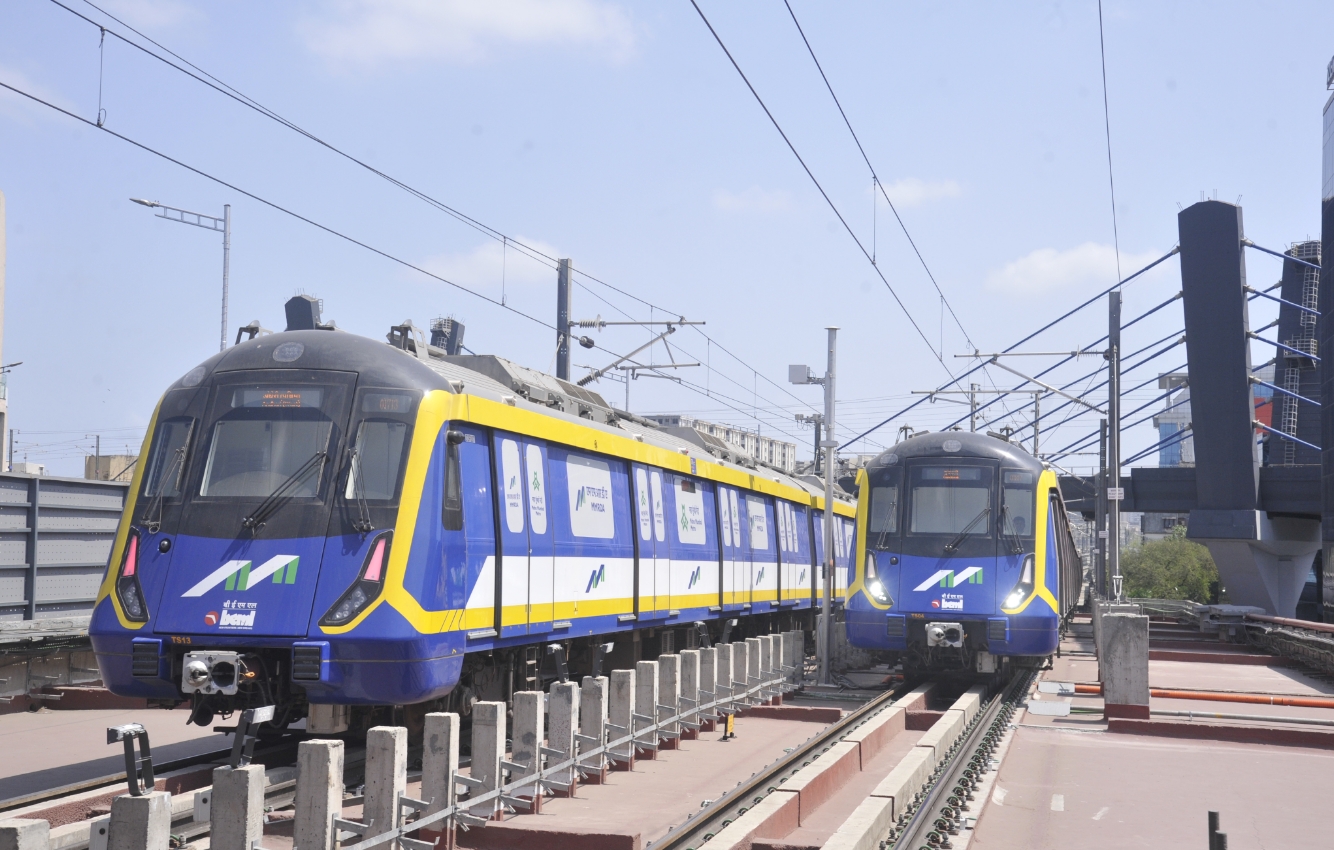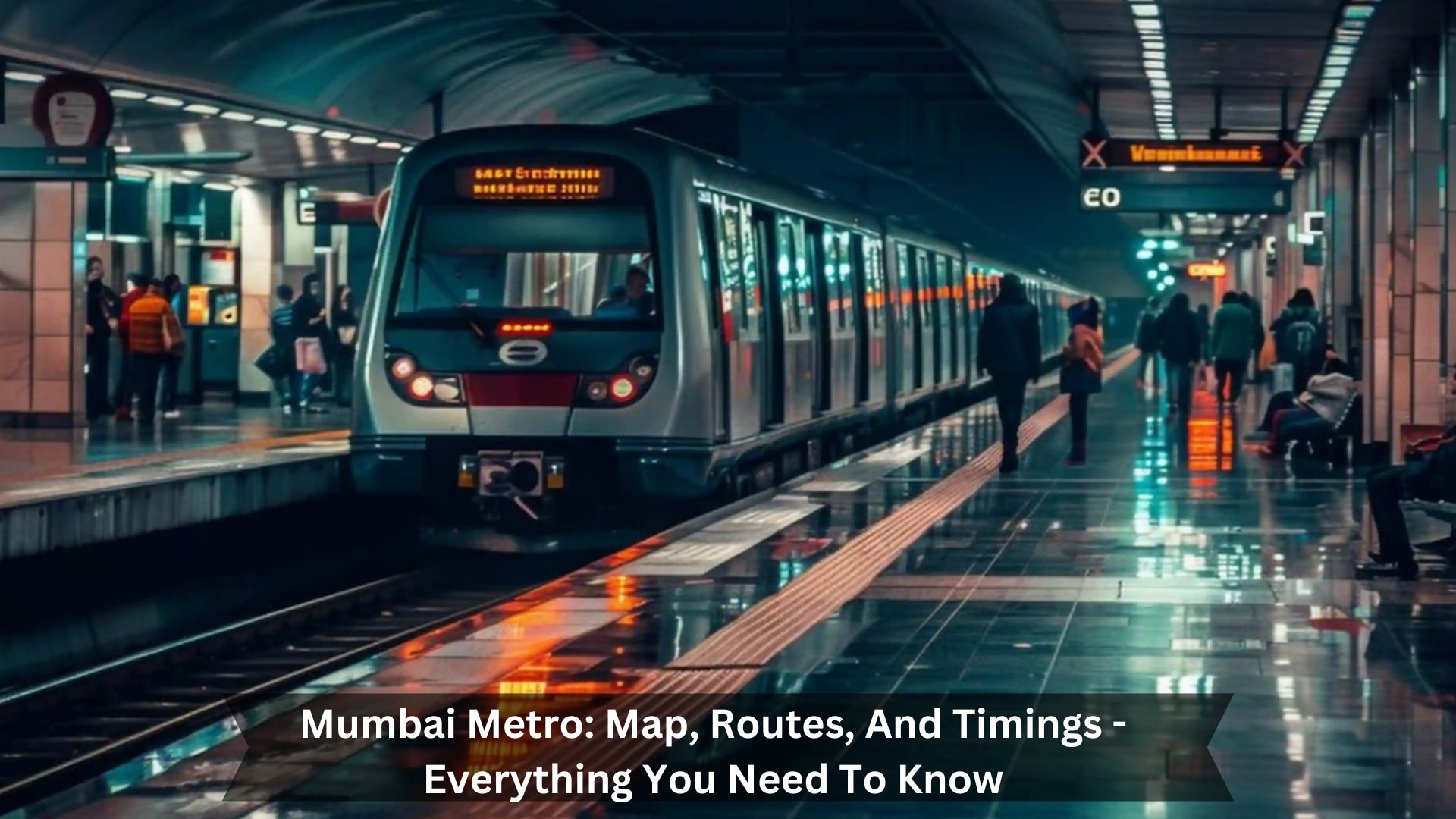Mumbai’s metro system is vital to the city’s public transport. It helps millions of people daily, making travel quicker and easing road congestion. The metro links important areas, assisting people to get to work and boosting the economy.
Several lines are up and running, with more being built. This network is crucial for the city. The metro runs on a schedule that fits busy and quieter times, making it convenient for everyone.
History of Mumbai Metro

The Mumbai Metro project started in 2006 to tackle the city’s rising population and traffic issues. It’s part of a bigger plan to fix Mumbai’s growing traffic jams and infrastructure problems. Led by the Mumbai Metropolitan Region Development Authority (MMRDA), the project ran into several issues, including problems with getting the land needed, environmental worries, and funding shortages.
But despite these problems, the first line from Versova to Ghatkopar opened in June 2014. This was a big deal for the city’s transport system and set the stage for more lines covering more Mumbai areas.
See Also – Bangalore Metro Timings And Route Map: Everything You Need To Know
Overview of Mumbai Metro Lines
| Line | Route | First Train Timing | Last Train Timing | Frequency |
|---|---|---|---|---|
| Line 1 | Versova – Ghatkopar | 5:30 AM | 11:25 PM | Every 4 minutes (Peak), Every 8 minutes (Off-peak) |
| Line 2A | Dahisar East – Andheri West | 6:00 AM | 10:30 PM | Every 8 minutes |
| Line 2B | DN Nagar – Mandale | Not Operational Yet | Not Operational Yet | Not Operational Yet |
| Line 3 | Colaba – SEEPZ (Under Construction) | Not Operational Yet | Not Operational Yet | Not Operational Yet |
| Line 4 | Wadala – Kasarvadavali | Under Construction | Under Construction | Under Construction |
| Line 5 | Thane – Kalyan | Under Construction | Under Construction | Under Construction |
| Line 6 | Lokhandwala – Vikhroli | Under Construction | Under Construction | Under Construction |
| Line 7 | Dahisar East – Andheri East | 6:00 AM | 10:30 PM | Every 8 minutes |
| Line 9 | Dahisar East – Mira Bhayandar | Under Construction | Under Construction | Under Construction |
| Line 10 | Gaimukh – Shivaji Chowk | Planned | Planned | Planned |
| Line 11 | Wadala – CSMT | Planned | Planned | Planned |
Operational lines (1-14)
Mumbai’s Metro network has 14 lines that help people get around the city quickly. Each line has its own number and color, making it simple for everyone to find their way. It links essential spots like Bandra, Andheri, and Ghatkopar. Trains come often, which means you can avoid much of the city’s traffic.
The trains are modern, with features like air conditioning, digital displays, and good security, ensuring a comfortable and safe ride. You can easily switch from the metro to buses or monorails, making your travel smoother.
Under construction lines
Mumbai’s Metro network is expanding with several new lines under construction. One key project is Line 3, which will run underground from Colaba to SEEPZ via Bandra. This line is a big deal because it will make traveling between major residential and business areas much easier.
Then, Line 4 stretches from Wadala to Kasarvadavali via Ghatkopar and Thane, and Line 6 connects Swami Samarth Nagar to Vikhroli. These new lines will help link the northern and eastern suburbs right to the city’s center. Expanding the metro is crucial. It’s about dealing with the increasing need for quick and accessible public transport in one of India’s busiest cities. This means a smoother and faster way for millions to get around.
Proposed lines
Mumbai’s Metro network is growing, with both existing and new lines underway. These lines promise better connectivity across the city. Let’s talk about some exciting future plans. For example, Metro Line 10 will link Gaimukh to Shivaji Chowk, connecting several districts.
Then Metro Line 11 is planned to go from Wadala to CSMT. This line will make it easier to get to central Mumbai. We also have Metro Line 12 on the drawing board. It’s set to run from Kalyan to Taloja, providing a vital link for commuters in the expanding suburbs. All these planned lines are significant steps towards improving Mumbai’s public transport system. They aim to cut down on traffic jams and make traveling around the city smoother.
Monorail lines
The Mumbai Monorail is vital to the city’s extensive public transport system, working alongside the many Metro lines. It mainly helps by linking various living and business areas to the main Metro stops. It started in February 2014 and runs from Chembur to Saat Rasta in Mahalaxmi.
The route is about 20 kilometers long and has 17 stops. This helps everyday travelers easily move between significant transport lines and local spots. The monorail also cuts down city traffic by offering a fast way to travel above ground. It works well with other transport options, making it easier to get around Mumbai.
Route Map, Timings, and Fares of Mumbai Metro

Operational routes and timings
If you plan to travel around Mumbai efficiently, getting familiar with the Mumbai Metro’s routes, schedules, and ticket prices is critical. The Metro has several lines, but let’s talk about Line 1, which stretches from Versova to Ghatkopar. This line significantly cuts down the city’s travel time because trains run from early morning around 5:00 AM until midnight. So, whether you’re an early bird or a night owl, there’s a train for you.
Ticket prices won’t break the bank either. They vary depending on how far you’re going, and you can choose from a single ride to a season pass, which is more budget-friendly if you ride often. The trains come frequently, especially during rush hours, so you hardly have to wait. If you’re commuting daily in Mumbai, the Metro is a reliable and convenient option.
Future network map
Building on what we’ve started with Line 1, Mumbai Metro’s next steps are pretty exciting. We plan to expand with several new lines—Lines 2 through 8. These new lines will reach areas that don’t have excellent service right now. This expansion will significantly reduce travel times, making getting from the suburbs to the city’s business areas easier.
We’re ensuring these new lines will have top-notch facilities and can handle more people daily. Also, we’re working on the schedules to ensure you won’t have to wait long or have difficulty switching from one line to another.
Also Read – Hyderabad Metro Timings: Daily Schedule, Routes, And Fares
Fares and ticket prices
The Mumbai Metro has several ticket options to suit everyone’s needs and budget, making it easy and affordable to get around the city. The cost depends on how far you travel, starting at just INR 10 and going up to INR 40 for longer trips.
If you ride the metro often, you might like the smart cards. They save you 10% on every trip. The one-day or three-day passes are great for those visiting or using the metro occasionally. They let you travel as much as you want while they’re valid.
Special discounts are also available for students, senior citizens, and those with disabilities, ensuring everyone can use the metro. The Mumbai Metro’s website or mobile app provides all the details about prices and discounts.
Conclusion
Thanks to clear maps, multiple routes, and regular schedules, navigating the Mumbai Metro has become more accessible. This guide lays out everything you need to know to travel smoothly across the city’s extensive metro network. You’ll learn about the different lines and stations and how they connect. Plus, we cover the operating times and ticket prices to help you plan better.
Whether you’re commuting daily, visiting, or new to Mumbai, the metro is designed to get you where you need to go quickly, reliably, and without breaking the bank. Give the Mumbai Metro a try for a faster way to travel and skip the traffic jams. It’s perfect for exploring Mumbai’s vibrant scenes.

Deepak Sharma is a passionate writer and avid traveler who specializes in uncovering the beauty and history of India’s attractions and temples. A graduate of Delhi University, Deepak has a deep-rooted love for his country and its rich cultural heritage.
